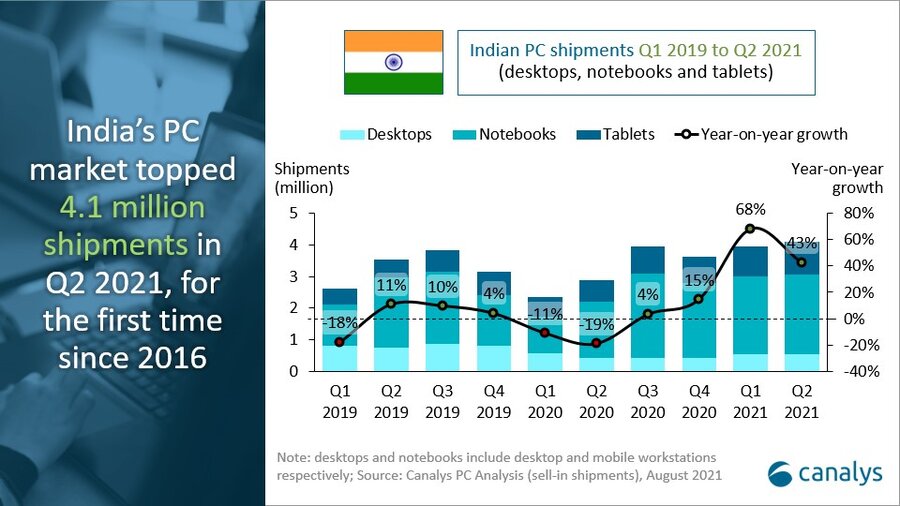One in six PCs shipped in Q4 2012 was an iPad
Shanghai, Palo Alto, Singapore and Reading – Wednesday, 6 February 2013
Worldwide PC shipments increased 12% year-on-year in Q4 2012 to reach 134.0 million units, with pads accounting for over a third. Apple continued to lead the PC market, shipping 27.0 million units and taking its share over 20% for the first time. HP shipped 15.0 million PCs, beating Lenovo by 200,000 units to regain second place, with both vendors taking an 11% share. Samsung, buoyed by strong pad shipments, had its first quarter in the top five, shipping 11.7 million PCs, giving it a 9% share and fourth place ahead of Dell. The notebook market continued to falter, with Q4 volumes flat compared with the same period in 2011. The combination of the Windows 8 launch and holiday sales in Western Europe and the US had little effect on worldwide shipments. The pad segment, however, grew 75% to 46.2 million units, with full-year shipments totaling 114.6 million units.
Dell’s reputation in the PC market continues to fade. It only shipped 9.7 million units, a 19% decline on 2011. Its direct business model is expensive and unsuitable for driving growth in new markets. A turnaround in fortunes is likely to take years. Should the planned buyout go through it will give the company time to rethink its strategy and refocus, away from the demands of Wall Street and shareholders. Microsoft’s involvement in the Dell buyout raises eyebrows in the light of its recent aspirations to become a hardware vendor. But it is not likely to solve Dell’s problems as even Microsoft struggles with pads – only 3% of pads shipped in Q4 2012 used a Microsoft operating system. The software giant’s entry into the PC hardware market was something of a non-event. High pricing, poor channel strategy and a lack of clarity regarding its RT operating system led to shipments of just over 720,000 units. ‘The outlook for Windows RT appears bleak. Hardware OEMs are ignoring it due, in part, to a pricing strategy that does not align with the economics of the pad market,’ said Tim Coulling, Canalys Senior Analyst. ‘We expect Microsoft to rethink its pricing strategy for RT in the coming weeks. Dropping the price by 60% should get OEMs back onside’. OEM support and a strategy to educate consumers as well as attract developers should give Microsoft a better chance to turn the fortunes of Windows RT around.
Apple’s growth in the pad segment was driven by strong demand for the iPad mini. Its overall shipments, however, were hampered by supply issues. Canalys estimates that the mini made up over half of Apple’s total pad shipments, with its attractive price point and compact design leading to significant cannibalization in the iPad range and wider PC market. Despite record shipments, Q4 saw Apple’s pad share dip to 49%, becoming the first quarter it has not controlled over half the market. ‘Apple timed the launch of the iPad mini well,’ said Pin-Chen Tang, Canalys Research Analyst. ‘Its success proves there is a clear demand for pads with smaller screens at a more affordable price. Without the launch, Apple would surely have lost more ground to its competitors.’
Amazon’s worldwide shipments grew 18% to 4.6 million units, as it expanded the Kindle Fire range and launched in markets outside the United States. Its international growth masked a decline in its home market, as it struggled to upsell customers to its larger-screen products. It also came under pressure from Apple, Google and Samsung. Samsung shipped 7.6 million pads in Q4, an increase of 226%, driven by its ability to push products down into lower price bands. As hardware commoditization accelerates, targeting low price points is now a requirement for any vendor looking to ship Android pads in volume. The success of Amazon and Samsung has seen an increase in the share of Android-based pads, which now account for 46% of the segment. ‘The sub-$200 price bands now feature products from established players that do not rely on low-quality components,’ said Tom Evans, Canalys Research Analyst. ‘Those who control ecosystems, such as Amazon and Google, can obtain revenue from content sales, but pure hardware OEMs must accept decreasing margins or exit.’ Google’s own Nexus 7 and Nexus 10 products performed relatively well, with combined shipments of 2.6 million. The Nexus products occupy slightly higher price points than similar devices from Samsung and Amazon. Google’s hardware play is as much about showcasing Android and its services as it is about driving volume sales.
Canalys is an independent analyst firm that strives to guide clients on the future of the technology industry and to think beyond the business models of the past. We deliver smart market insights to IT, channel and service provider professionals around the world. Our customer-driven analysis and consulting services empower businesses to make informed decisions and generate sales. We stake our reputation on the quality of our data, our innovative use of technology, and our high level of customer service.
To receive press releases directly, or for more information about our events, services or custom research and consulting capabilities, please complete the contact form.



